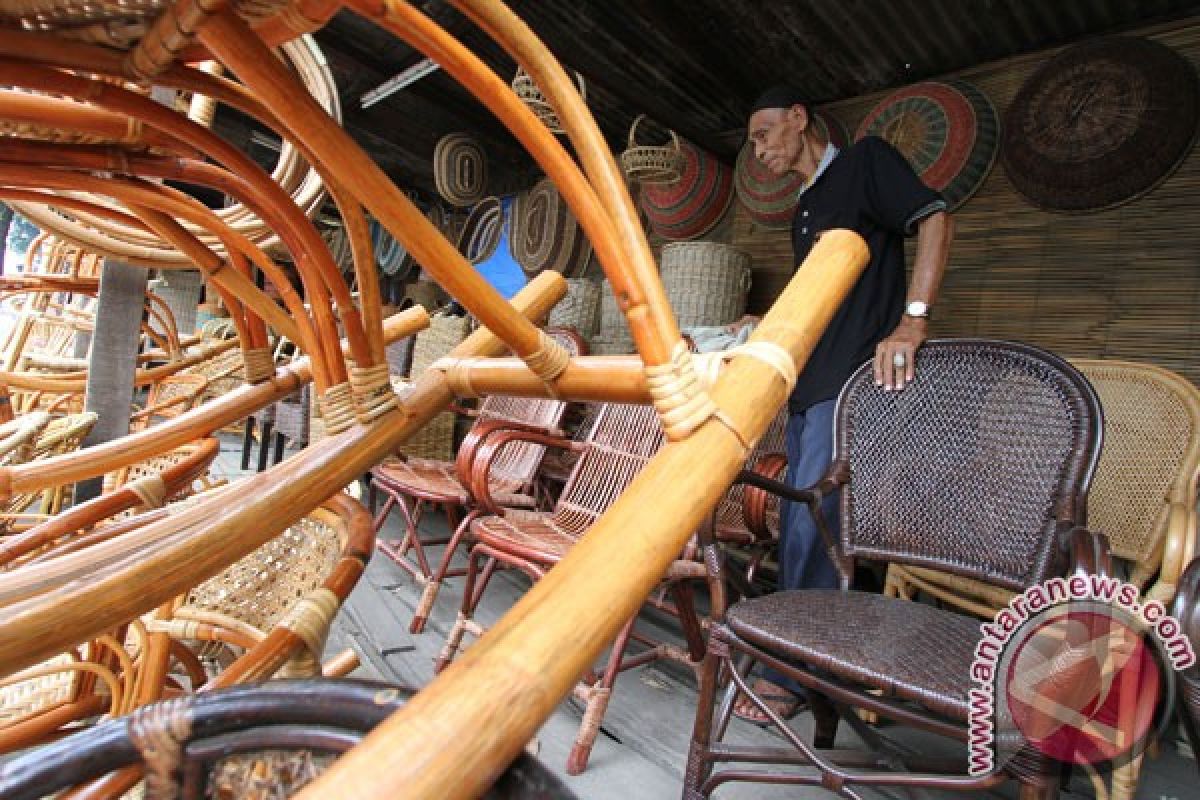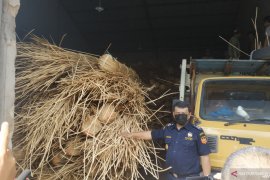"Our rattan industry has yet to be developed to its maximum potential. The Central Sulawesi National Rattan Innovation Center is, however, expected to boost the development of national rattan industries through the availability of new rattan furniture designs and services," Industry Minister Saleh Husin said after inaugurating the rattan innovation center on Saturday.
The building of the first Indonesian rattan innovation center is located in an industrial area within Palus Special Economic Zone (KEK).
Central Sulawesi province is the biggest rattan producer in Indonesia, contributing 60 percent of the worlds rattan supplies. This makes Indonesia the worlds largest rattan producer.
Considered the worlds largest rattan exporter, Indonesias rattan resources are available in tropical forests across ten provinces. Central Sulawesi claims being the biggest producer among them all.
Indonesia was a major exporter of raw rattan products in the past, but it stopped its raw rattan exports in 2011, encouraging local industries to process the commodity at home to gain added values before they are exported.
Although many rattan farmers and collectors complained about the ban on raw rattan exports, arguing that rattan industries are not able to absorb their produce, the value of Indonesias processed rattan-based exports have continued to increase since then.
The trade minister issued decree number 35/2011, banning the export of raw rattan in an effort to increase rattans added value. Since then, the decree has had a positive impact on Indonesias rattan-based product exports.
Data from the Indonesian Rattan Handicraft and Furniture Industry Association (Asmindo) revealed that Indonesias rattan exports in 2010 were valued at US$137.9 million, a 9.6 percent increase when compared to those in 2009. However, figures dropped by 17.6 percent to US$113.6 million in 2011 due to the global economic crisis.
Other data also indicated that the value of Indonesias rattan-based exports in 2011 was recorded at US$113.6 million. This began to increase after the trade ministers decree was issued. The exports continued to increase in value, and in 2012 and 2013, it stood at US$202.6 million and US$262.5 million, respectively.
In 2014, the Asmindo set a bold export target of more than US$1 billion.
Asmindo Chairman for West Java, Sumartja, stated recently that Cirebon, a rattan-producing district in the province, is expected to contribute to the national export target this year.
"Indonesias rattan-based product exports are expected to meet the target, which is set at over US$1 billion this year," Sumartja was quoted as saying by Bisnis.com online media last April.
According to the Indonesian Rattan and Wood-Based Furniture Association (AMKRI), Indonesias rattan-based furniture and handicraft exports continued to increase despite the ban imposed in 2011. This year, national rattan product exports are expected to increase by 8 percent from that in 2013 when it stood at US$262.5 million.
AMKRI Chairman for East Java, Nur Cahyudi, noted that the ban on the exportation of raw rattan affected the performance of the countrys rattan exports positively.
Exports of raw rattan, which saw a decline when the decree was first imposed, is now encouraging, he affirmed.
Cahyudi pointed out that Indonesias rattan-based products were exported to China, the United States, Japan, Germany, and the Netherlands, among other countries. Last years exports increased by 30 percent to US$262.5 million from US$202.6 million in 2012, he added.
The AMKRI chairman further noted that East Javas contribution to the national exports accounted for 30 percent of the total. Recently, the East Java chapter of AMKRI organized exhibitions in California in the United States and in Guangzhou in China to measure buyers interest.
In contrast to rattan processing industries, rattan farmers and collectors complained about the ban on raw rattan exports.
Farmers and collectors in Kotawaringin Timur district, Central Kalimantan, asked the president to lift the ban.
"We hope the president revokes the ban, or at least allows us to export semi-finished rattan products, which will encourage us again and enable us to absorb more workers," Dahlan Ismail, a rattan grower and collector in Kotabesi sub-district of Sampit, Central Kalimantan, remarked last week.
He added that when the government issued the ban on raw rattan exports through the trade ministers decree number 35/2011, the rattan industry underwent a gloomy period. This had had significant social impacts as it had crippled businesses in the sector.
Thousands of tons of raw rattan in Central Kalimantan rotted due to the absence of buyers as industries at home were only able absorb a limited volume of raw rattan. The waves of workers layoffs that followed could not be prevented.
"We hope the decree on the ban on raw rattan exports is lifted, or at least revised to allow the export of semi-finished rattan products," Ismail emphasized.
In the face of this problem, an Asmindo executive once suggested the establishment of a buffer stock agency like the logistics board Bulog. Bulog has the task of collecting farmers rice and distributing it to the people as and when they need it.
A similar buffer stock agency is needed to accommodate farmers raw rattan and ensure stocks for rattan-based manufacturing industries.
The problem of rattan stocks has pit rattan farmers and rattan-based industries against each other over the last few years.
When the government allowed raw rattan to be exported in accordance with a decree issued by the trade minister in 2009, rattan-based manufacturing industries complained of shortages of raw material.
Now, with the trade ministers 2011 decree, it is the rattan farmers who complain.
"What is needed now is government assistance in marketing and roads that will allow rattan farmers and collectors to carry out their business in villages smoothly," 52-year-old Mardan, a rattan collector and farmer in Tumbang Munjul village, Seruyan district, Central Kalimantan, pointed out.
(A014/INE/B003)
EDITED BY INE
(A014/KR-BSR/B003)
Reporter: Andi
Editor: Jafar M Sidik
Copyright © ANTARA 2014












